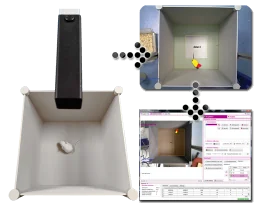
A unique setup for the automation of the Open Field test for rats and mice : 3D-camera based...

A unique setup for the automation of the Open Field test for rats and mice : 3D-camera based...
Discover our products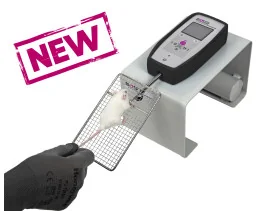
An easy way to objectively quantify the muscular strength of mice and rats, and to assess the...
Discover our products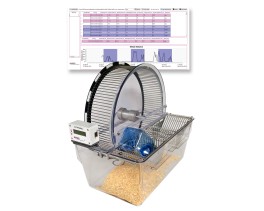
The BIOSEB Spontaneous Activity Wheel offers an effective solution for quantifying rodent...
Discover our products
The BIOSEB Spontaneous Activity Wheel is an easy way to quantify rodent voluntary activity in...
Discover our products
The uncomplicated way to monitor rodent activity over several days from their home cage...
Discover our products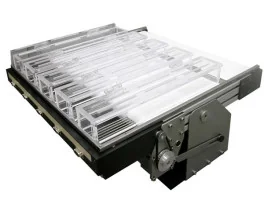
These small animal treadmills are used for forced exercise training and accurate testing of...
Discover our products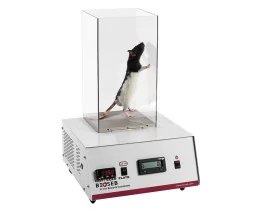
For testing animal's thermal sensitivity to pain resulting from exposure to heat or cold: the...
Discover our products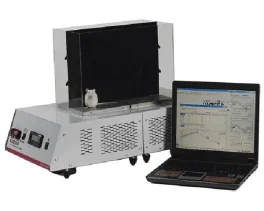
An operator independent test to study pain thresholds in rodents (mouse and rat) by assessing...
Discover our products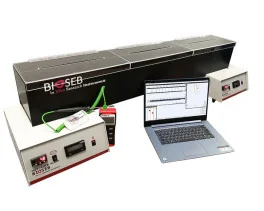
New and improved! The operator-independent Thermal Gradient Test used to show favorite...
Discover our products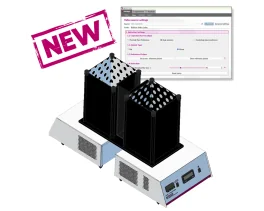
The Contextual Kits for T2CT have been designed to enhance thermal place preference studies...
Discover our products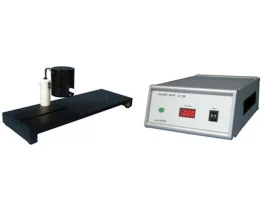
Particularly sensitive for studying the analgesic properties of pharmacological substances
Discover our products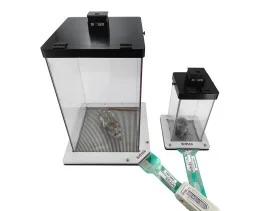
The advanced version of our Dynamic Weight Bearing Test for rodents (rats and mice) allows for...
Discover our products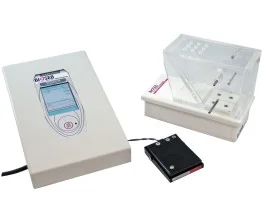
An easy and non pain-inducing solution for assessing the level of discomfort (incapacitance) in...
Discover our products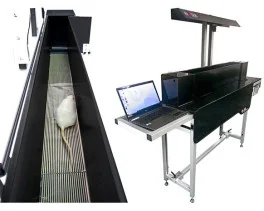
A unique device that provides automated measurement of weight bearing and force distribution...
Discover our products![Dynamic Weight Bearing 2.0 – Postural Module [Add-on]](https://bioseb.com/733-home_default/dynamic-weight-bearing-20-add-on-postural-module.jpg)
Expand Your Analysis with Advanced Postural and Locomotor Calculations BIOSEB’s renowned...
Discover our products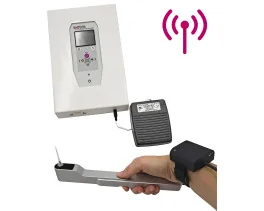
A quick solution to determine the mechanical sensitivity threshold in rodents (mice and rats)....
Discover our products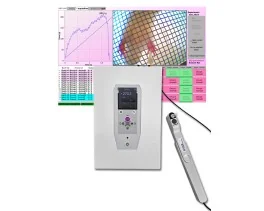
As an electronic version of the classical Von Frey Filaments esthesiometer (or aesthesiometer),...
Discover our products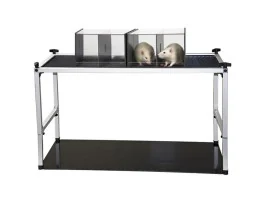
New ROBUST and modular cages to gently hold rodents (rats or mice) during nociceptive and...
Discover our products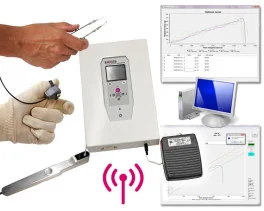
An economical and versatile solution for when flexible quantitative sensory testing (QST) is...
Discover our products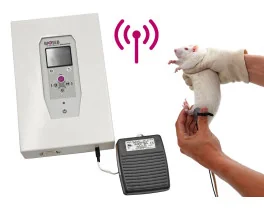
Dedicated to small animals, like mice and rats, Smalgo is a pressure-based analgesimeter...
Discover our products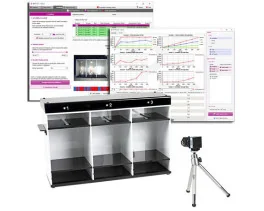
Bioseb's version 5 of the Tail Suspension Test system, based on both strain sensors and video...
Discover our products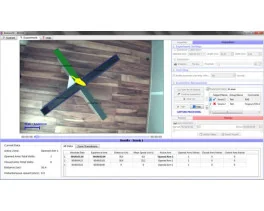
NEW ! A complete (hardware + software), dedicated and automated solution for the Elevated Plus...
Discover our products
A unique setup for the automation of the Open Field test for rats and mice : 3D-camera based...
Discover our products
Open-field test - ARENA ONLY - used to evaluate of animal's basal activity and its evolution for...
Discover our products
The new Forced Swimming Test system from Bioseb uses a dual approach: Combining a double input...
Discover our products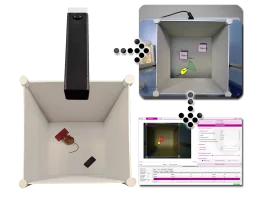
A brand new innovative setup for the automation of the Novel Object Recognition Test : 3D-camera...
Discover our products
Open-field test - ARENA ONLY - used to evaluate of animal's basal activity and its evolution for...
Discover our products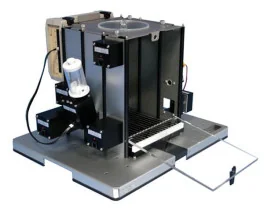
An entirely modular experimental enclosure designed to conduct operant conditioning procedures...
Discover our products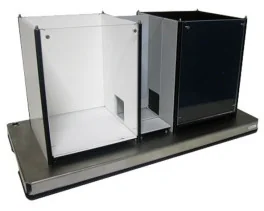
A standard experimental chamber for automated or manual assessment of conditioned place...
Discover our products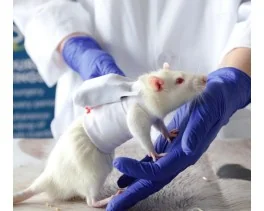
Real-Time Physiological Monitoring for Small Animals – Wireless & Non-Invasive The Bioseb...
Discover our products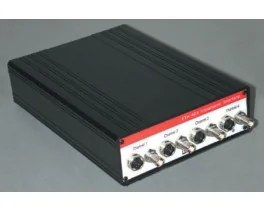
The ETH-401 is a bridge amplifier for various transducers that provides four channels of...
Discover our products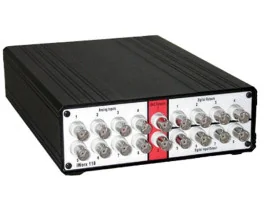
The IX-118 is a fast 100 Khz, high-resolution data acquisition system suitable for most data...
Discover our products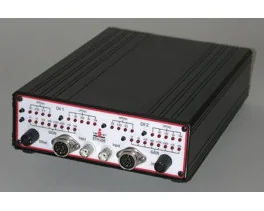
The ETH-256 is a 2 channels high performance, general-purpose life science research amplifier,...
Discover our products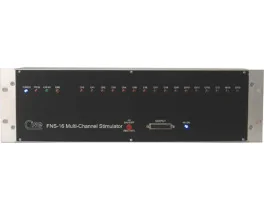
Full-featured multi-channel stimulator for neuromuscular stimulation
Discover our products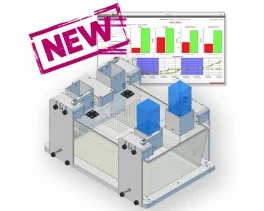
Discover BIO-FOODIS, the next generation solution for understanding animal feeding behavior with...
Discover our products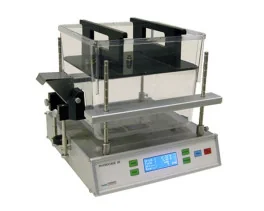
The OXYLET system - Physiocage is a modular system allowing the integration of respiratory...
Discover our products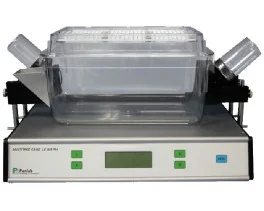
Innovative and appropriate equipment for measuring food/liquid consumption and correlated motor...
Discover our products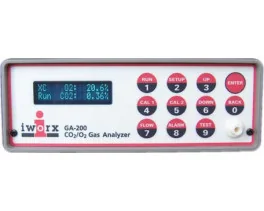
An economical, high performance Oxygen and Carbon Dioxide Analyzer with sampling rates fast...
Discover our productsThermal allodynia and hyperalgesia are frequently observed in chronic or neuropathic pain but are still poorly diagnosed. However, many research centres around the world are working on preclinical models to better understand the mechanisms involved. Specialised devices for precise thermal pain assessment, such as those offered by Bioseb, can play a key role in advancing patient treatment. These systems are essential for studying responses to heat or cold stimuli, enabling insights into thermal pain hypersensitivity and analgesic therapies. Read more >

Applications
Applications
There are 5 products.
For testing animal's thermal sensitivity to pain resulting from exposure to heat or cold: the Cold Hot Plate is an...
An operator independent test to study pain thresholds in rodents (mouse and rat) by assessing temperature preference...
New and improved! The operator-independent Thermal Gradient Test used to show favorite temperature and thermal comfort...
The Contextual Kits for T2CT have been designed to enhance thermal place preference...
Particularly sensitive for studying the analgesic properties of pharmacological substances
Internationally recognized for their precision and reliability, Bioseb's instruments have been featured in leading peer-reviewed studies investigating thermal allodynia and hyperalgesia. These tools enable researchers to explore thermal pain mechanisms and assess therapeutic interventions. Below are notable examples of studies using Bioseb's solutions in thermal pain research.
Thermal sensitivity plays a crucial role in pain research, providing insights into the mechanisms of both heat- and cold-induced discomfort. Bioseb’s specialized instruments facilitate the precise assessment of thermal pain thresholds and responses in rodent models. By carefully controlling and monitoring temperature stimuli, researchers can detect subtle shifts in thermal sensitivity, characterize thermal allodynia or hyperalgesia, and evaluate potential analgesic treatments. These systems are indispensable for understanding the complexities of temperature-related pain and guiding the development of novel therapies for neuropathic and inflammatory conditions.
These instruments are suitable for investigating a broad range of pain models involving thermal stimuli, including neuropathic pain, inflammatory pain, and pain induced by nerve injury or peripheral sensitization. They are also valuable for evaluating the analgesic effects of pharmacological treatments targeting thermal pain pathways.
Our systems use precision temperature control, stable heating/cooling elements, and automated monitoring to maintain consistent and uniform stimuli. This consistency ensures that any observed changes in animal responses are attributable to differences in pain sensitivity or analgesic interventions rather than variability in the test conditions.
Yes. The Cold Hot Plate Test is specifically designed to assess both heat and cold sensitivity in a single platform. Similarly, the Thermal Gradient Test 2.0 and Thermal Place Preference assay can be configured to explore various temperature ranges, allowing comprehensive analyses of thermal hypersensitivity.
Our thermal tests are designed with animal welfare and data integrity in mind. Many of the systems, such as the Thermal Place Preference and Thermal Gradient Test, allow the animal to move freely and choose its preferred temperature zone, reducing handling and stress. Automated data acquisition and operator-independent test designs further minimize observer bias.
Yes. Data can be easily exported in standard formats compatible with common statistical, imaging, or electrophysiological analysis software. By integrating thermal pain data with other endpoints, researchers can form a comprehensive picture of pain mechanisms and treatment effects.
On-demand technical support is available from Bioseb. Services can include help with installation, hardware and software training, or protocol optimization, depending on the complexity of your equipment. For more information or to arrange assistance, please reach out through our contact form.
check_circle
check_circle